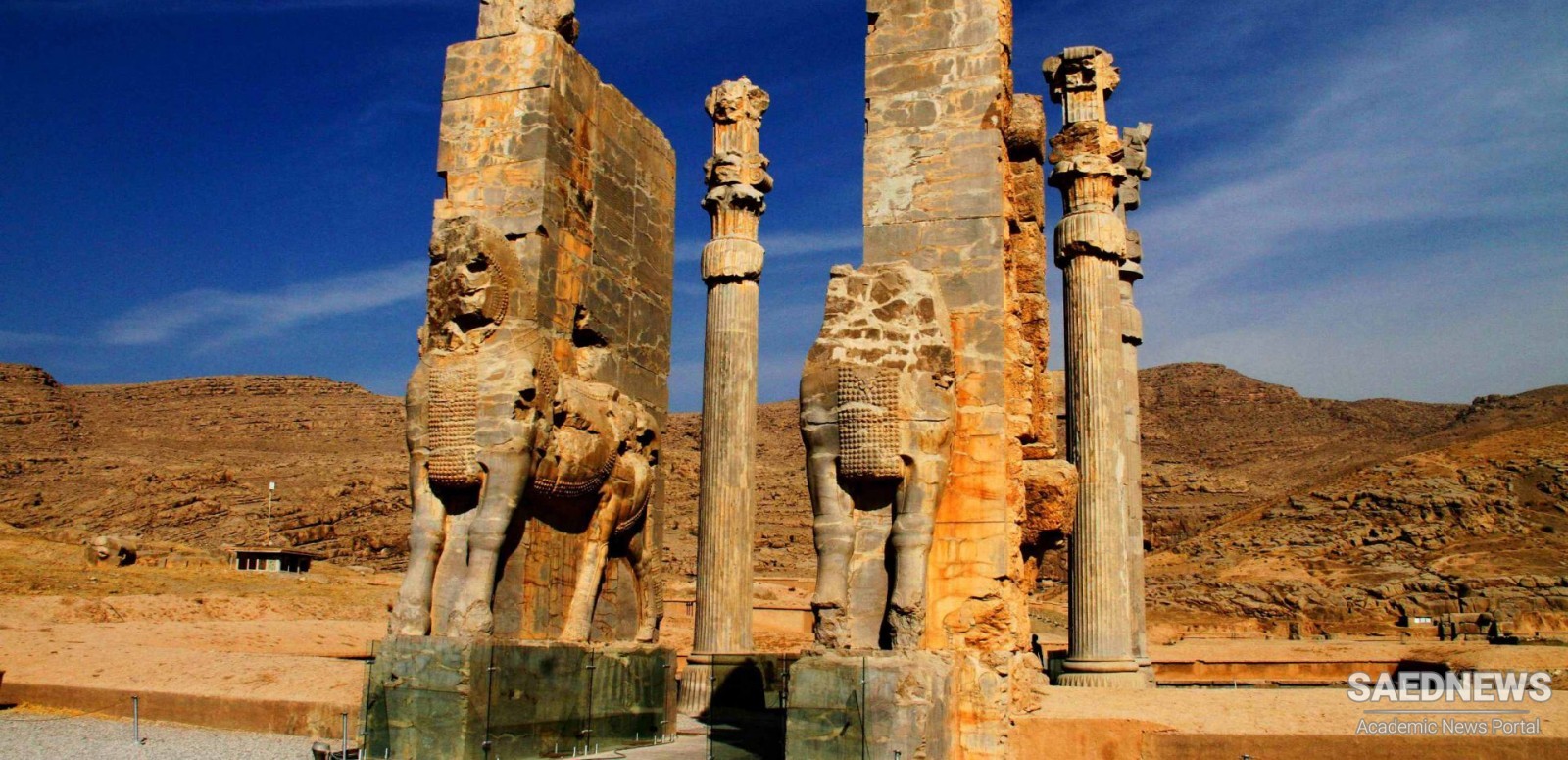It began with the political domination of these areas by Persian-speaking dynasties, first the Achaemenids, then the Sassanids, along with their complex political-cultural and ideological Perso-Iranianate constructs, and the establishment of Persian-speaking colonies throughout the empires and beyond. The advent of Islam (since 651 CE) represents a crucial shift in the history of Iran and thus of Persian. It resulted in the emergence of a double-focused Perso-Islamic construct, in which, after Arabic in the first Islamic centuries, Persian reasserted itself as the dominant high register linguistic medium, and extended its dominance into formerly non-Persian and non-Iranian-speaking territories in the East and Central Asia.
The writing system became that of the new dominant religion, and there occurred increasing infusion of Arabic features into the lexicon, phonology and grammar (comparable to the absorption of the Norman component into English). However, throughout the evolution of the literary standards from Early New Persian to Modern Standard Persian the considerable typologcal changes that Persian underwent are due to both internal Persian developments, induding the leveling of regional features, and to the assimilation of expanding areal cross-linguistic typological isoglosses.
Persian was cultivated at the courts of the Anatolian Seljuk and Ottoman rulers (from ca. 1 200-1 922), several of whom are known for composing Persian poetry. Probably best known among their proteges is Rumi (d. 1 273), the most cherished Persian mystic poet who had come to Konya from Wakhsh near Balkh in Afghanistan. Literary Ottoman Turkish is a virtual amalgam of Turkish and Persian (with all of the latter's Arabic loan elements).
In the East, Urdu developed under heavy Persian influence. Persian first entered India with the conquest of north-west India by Ghaznavid armies in the eleventh century. Four centuries later, Persian was chosen as the court language of the Mogul rulers (1 530- 1 857), who were major patrons of Persian literature and poets from Iran, unlike the contemporary Safavids in Iran.
It was at the courts of India and Turkey where many of the major traditional dictionaries of Persian were compiled from the fifteenth to the eighteenth centuries, including grammatical treatises. Simultaneously, there developed in India a Persian vernacular, and it was from the Indian scribes and secretaries that the English officers of the East India Company, a number of whom wrote grammars of Persian, learned their Persian, with all its local idiosyncrasies. Persian was abolished in its last official bastion the courts of law-in 1 837 by the authorities of the East India Company.


 Everything about the Old Persian Language
Everything about the Old Persian Language














































